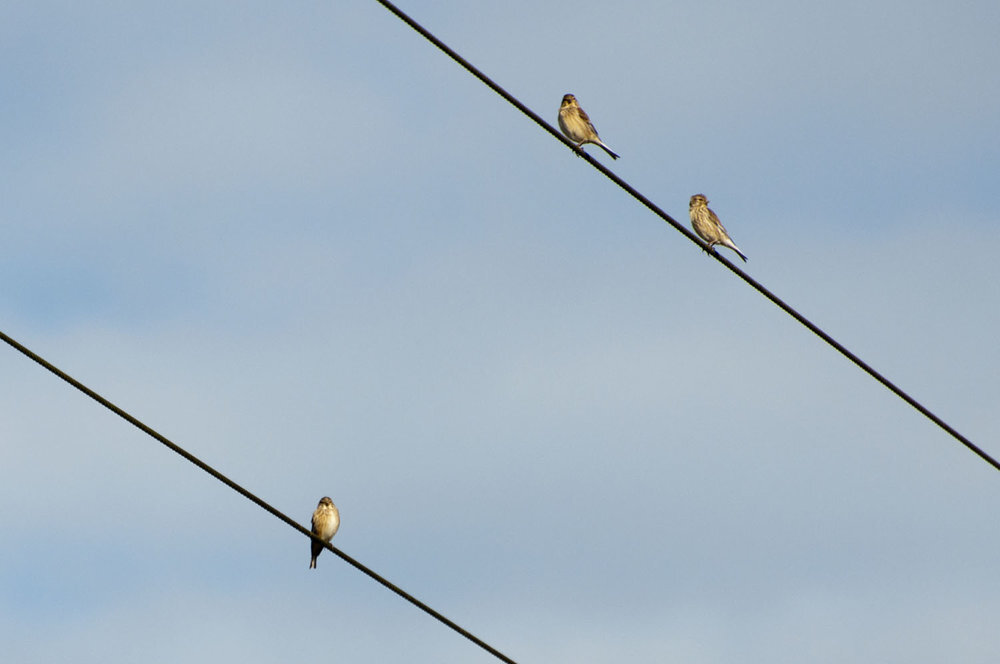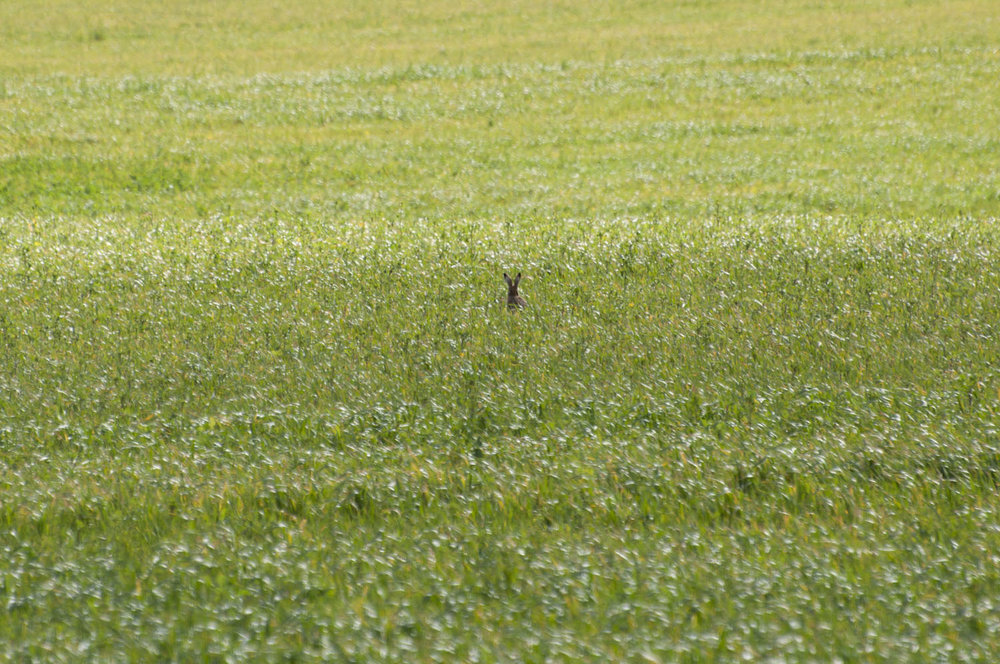The Lark and the Hare
Taking advantage of the glorious few days of an early summer in early April, we were up early and out with the dog before the frost had left the flat roof of the shed. In the fields, water droplets sparkled on the tips of the grass.
On the way up Snow Angel (chaffinches, yellowhammers and a lark overhead) a tractor made its way onto the field at the top of the hill. As we approached, the arms of the tilling machine lowered to the ground and off the tractor went. I am tempted to say that off it went went like a shot which perhaps in some senses would not be accurate but the machine was certainly not hanging around.
We went off down Puddocks and into the next field, stopping to look for Kingfishers, which alas were not to be seen, and at several others delights that were. The may and blackthorn blossom is a wonderful sight, particularly the huge fluffy balls seen against the blue of the early morning spring sky. On into Manesfield, stopping as usual on the bridge to again not see the Kingfishers but did see one the resident grey wagtails.
All the while, the sound of the tractor could be heard from across the fields - a sound make louder by the mist. Leaving the village and heading home by the lane the tractor we saw in Puddocks was now tearing round the next field whilst a second tractor with trailer of large yellow bags trundled into Puddocks to leave the seed. Yet another tractor appeared coming down the hill and stopped to go into the field behind the church. This was the spray machine, off to do something to the crop of beans that are a few inches high.
All this activity is not surprising. A clear spell of weather providing a good window to get the next crops in. The action started last week with the field with the cover crop being given a dose of weed killer. Now yellow, the fields are taking on a parched look as the tiller does another run to be followed, I presume, by the sowing.
Of course it is difficult to knock this - though we did wonder at what was being sprayed given the the bee colonies are not far away and we had not been informed of any pesticide being used. Yet the thing concerning us most were the larks and the hares. The lark has been re-establishing itself across these fields over the past few years. A few years ago we might have heard one or at best two. Now each field is home to at least two and on such days as today the joy of hearing them singing their little socks off, usually out of sight, is enough to raise the dampest of spirits.
Larks are ground nesting birds and the cover crop was just the right sort of height in which they could safely build their nest and raise their young. As these fields have been left until now with the cover crop, there will be the problem of nests already filled with eggs possibly being run over by the tiller. The best we can hope for is that the adults have not been scared away and that they will return and rebuild their nests among the new crop. They do have a long breeding season and make 2 or 3 nesting attempts during that time. Let's hope they do.
As for the hares, a target species under the LEAF scheme for the area, their numbers may be improving in the area but they are not usually around when I am! Having said that, we did see a pair last week in one of the fields being cultivated today and I wonder how they might fare. Hares, despite running extremely fast also have a habit of staying perfectly still if threatened and it is this that can lead to death by tractor. Their shallow forms for the young may also be at risk. No hare seen this morning, perhaps long gone as the tractors invaded their world. I shall be out at dusk one day soon to see if they are still around.


